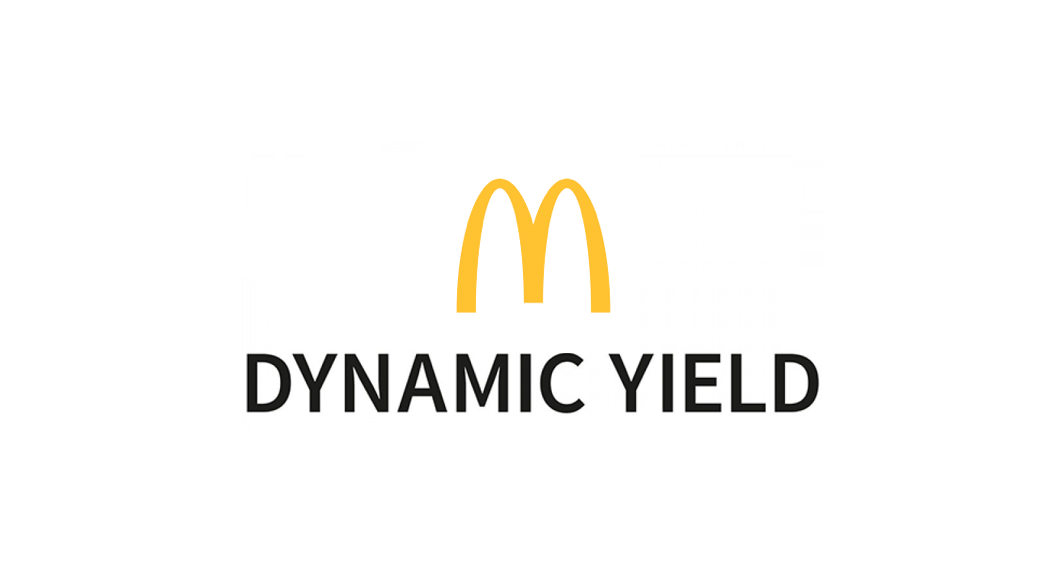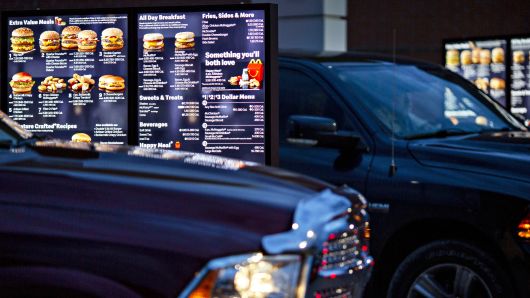
Within the last two weeks, McDonald’s has announced the purchase of a big data startup company out of Tel Aviv called Dynamic Yield. The company boasts of providing retailers with algorithmically driven “decision logic” technology that is the next evolution in artificial intelligence. It uses millions of data points to help nudge consumers towards additional add-on purchases within their shopping cart. McDonald’s has reportedly paid over $300M to acquire the firm in hopes to move the fast food chain into the big data era. The burger joint can definitely afford the purchase, boasting nearly $6B in net income and over $4.2B in free cash flow in 2018 alone. But what does McDonald’s want with Dynamic Yield, they don’t even have a shopping cart.
The theory is that Dynamic Yield will assist McDonald’s in a number of ways over the coming years, but first up is in the Drive Thru. If you haven’t been through a McDonald’s drive thru lately, then you may not have noticed that many of them have switched to a digital menu, that can be changed from a centralized location. No longer does McDonald’s have just a breakfast menu that rotates to lunch at a certain time, decision logic will now be able to assist McDonald’s in changing these screens with in decision criteria, including adding larger pictures of ice cream on hot days or hot coffee lattes on cold days. And as the system learns specific geographic tendencies, then it will learn what to emphasize on each menu board location across all of these interactive variables. It will even relay this information to the pre-order digital primer that sits car-lengths ahead of the menu screen for those busy times (as seen in the daytime picture below). McDonald’s serves around 68 million customers every single day. As CEO, Steve Easterbrook, describes it, Dynamic Yield provides McDonald’s the opportunity to “transition from mass marketing to mass personalization.” If and when this would be combined with a loyalty program or an RFID referencing system, the personalization options are speedy and endless.


Wired magazine provides a description of what this might look like in practice: “When you drive up to place your order at a McDonald’s today, a digital display greets you with a handful of banner items or promotions. As you inch up toward the ordering area, you eventually get to the full menu. Algorithms crunch data as diverse as the weather, time of day, local traffic, nearby events, and of course historical sales data, both at that specific franchise and around the world. In the new McDonald’s machine-learning paradigm, significant display real estate goes toward showing customers what other items have been popular at that location, and prompting them with potential upsells. Thanks for your Happy Meal order; maybe you’d like a Sprite to go with it.” As Wired admits, “it’s not hard to imagine some of the possible scenarios. If someone orders two Happy Meals at 5 o’clock, for instance, that’s probably a parent ordering for their kids; highlight a coffee or snack for them, and they might decide to treat themselves to a pick-me-up. And as with any machine-learning system, the real benefits will likely come from the unexpected.”
In his interview with Wired, Easterbrook acknowledges the backwards integration of this type of knowledge through the supply chain, “Ultimately you can see we’ll be able to use predictive analytics—we’re going to have real-time information, as we start to connect the kitchen together—further back through our supply chain. I’m sure that will happen,” says Easterbrook. “That isn’t part of this particular technology, but as you start to link the predictive nature of customer demand all the way through your stock levels in the restaurant and the kitchen, you can almost flex it back down through the supply chain… McDonald’s is a high-volume, low-margin business; anything that helps cut down on waste makes a big difference.”
This is just another example of the future of marketing at the intersection of data analytics and the consumer experience. Students who experience the Social Media Magnet courseware are so much more prepared to use analytics in their daily jobs and creative processes. With a strong emphasis on platform analytics, email analytics, and especially Google Analytics, our students are becoming familiar with the use of analytics at every step of the digital marketing process, considering the user experience of their own websites and transferring that skill set over to future employers.
If you are a college professor and are just becoming familiar with what we do at The Social Media Magnet, check our professor overview with highlights of our features and benefits. If you are interested in considering The Social Media Magnet for your university, we have a professor preview function that will allow you to see and work with some of the content. If you are already in preview, which many of you are, and you are ready to commit to using our curriculum in your next semester’s class, then fill out our Commitment Form to get on-boarded and prepped for your next class. Or if you just have some general questions, feel free to contact us. We would love to assist you however possible.
